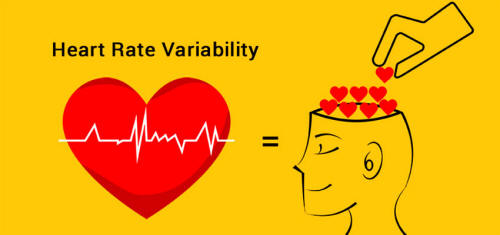|

May 05, 2016
from
HeartMath Website
Spanish version

Would it surprise you to know that a
recent study proposes that wisdom, or good judgment is not
exclusively a function of your brain, but also of your heart?
More precisely, "wise reasoning," the study's authors (Igor
Grossmann, Baljinder K. Sahdra and Joseph Ciarrochi) say, is closely
dependent upon what scientists refer to as heart rate variability as
well as an ego-decentered mind.
Both are key determinants of wiser,
less-biased judgment.
Scientists at HeartMath Institute and elsewhere know that optimal
levels of heart rate variability - the slight time differences that
can occur between heartbeats - typically reflect healthy function of
a body's systems.
Now, according to a recently published study, high heart rate
variability (HRV)
in an individual may be associated with a greater ability to reason
wisely.
This is according to researchers who
conducted the study, 'A
Heart and A Mind - Self-distancing Facilitates the Association
Between Heart Rate Variability, and Wise Reasoning.'
Besides high HRV, another characteristic the researchers found with
those who exhibit a capacity for wise reasoning is self-distancing
oneself from an issue when making judgments or decisions.
A self-distanced perspective on an issue, for example, takes into
account the opinions of others and additional external factors and
tends to result in less personally biased judgments and reasoning.
Self-distancing contrasts with self-immersed, or
egocentric perspectives, which, the researchers note, tend toward
more personally biased judgments and reasoning because they
typically do not incorporate others' viewpoints and additional
external factors.
Following are the key methods the researchers used in the study,
which included 150 adult participants in New South Wales, Australia.
They were instructed to engage in these
two basic tasks:
-
Social reasoning task
Participants selected from
various political and social issues relevant to Australians
in the last few years and about which they felt strongly.
Among these were funding cuts in
education, climate change, hospital funding and
unemployment.
-
Attributional judgment task
Participants were asked to form
impressions of a stranger after receiving limited
information about the person.
They were told such things as
the person likes having fun with friends, doesn't like doing
too much work, etc. They also were told about a neutral,
positive and negative act the person had committed.
Throughout the study, participants'
resting HRV was measured along with their spontaneous impressions
relative to their tasks.
To ensure they could identify who was self-immersed and who was
self-distanced as they responded during the tasks, the researchers
did the following:
"We randomly assigned participants
to the self-immersed or self-distanced conditions to get (their)
insight on factors that would be important to consider when
imagining how this particular issue might unfold in the future."
For example, those assigned to be
self-immersed were instructed to,
‘‘immerse themselves in the
situation and approach their thoughts from the first-person
perspective."
They had to use the pronouns I and me as
much as possible in their thinking related to an issue. Thus, there
was a greater likelihood their personal opinions and experiences
would affect their judgments.
In the study's conclusion, the researchers acknowledge a
longstanding viewpoint that a "tangible empirical inquiry" of wisdom
may be too "ethereal," meaning that it has been considered
unquantifiable.
Research over the last 25 years,
however, has established several psychological components of wise
judgment, they wrote.
Additionally, they state,
"Neuroscientists (more recently)
have proposed that to understand individual differences in
wisdom, one also ought to consider aspects of human physiology."
That is what led to the focus on HRV,
the authors explained.
"Our research suggests that
wisdom-related judgment is not exclusively a function of the
body or the mind. Rather, greater heart rate variability and an
ego-decentered mind are required for a wiser, less-biased
judgment.
"Specifically, we propose that high-HRV people will be abler
than low-HRV people to reflect on a social issue in a wise
fashion when they are cued to self-distance.
However, when they are not cued to
self-distance, both low- and high-HRV people are expected to
show the default egocentric biases."
Over the last 25 years, HeartMath
Institute has studied the human capacity to self-regulate thoughts,
emotions and behavior and developed a variety of techniques and
technology to facilitate this.
The new study is very much in harmony with HeartMath's findings over
many years of research in this area, says HMI Executive Vice
President and Director of Research Rollin McCraty, Ph.D.
"It is consistent with other studies
that show higher levels of HRV are associated with better mental
functioning," McCraty said. "Additionally, it shows that when we
get outside our self-centered perspectives we make wiser
decisions."
He said the study also directly supports
the 'Freeze-Frame Technique',* the first self-regulation technique
HeartMath founder Doc Childre developed.
* The 'Heart Lock-In' tool is
an emotional restructuring technique, generally practiced for 5 to
15 minutes, that helps build the capacity to sustain the
psycho-physiological coherence mode for extended periods of time.
The 'Freeze-Frame technique' is a one-minute positive emotion
refocusing exercise used in the moment that stress is experienced to
change perception and modify the psycho-physiological stress
response. For in-depth descriptions of these techniques, see Childre
& Martin (1999), and Childre & Rozman
(2005).
The Coherent Heart
Freeze-Frame helps people make
better choices and find out-of-the box solutions, he explained.
"The first steps of the technique,"
McCraty said, "increase your HRV by shifting you into a more
heart-coherent state and the later steps help you shift your
perspective to a more objective viewpoint that is more inclusive
and intuitive."
Freeze-Frame and all of HeartMath's
numerous techniques were intentionally designed to be simple so
people of all ages could use them essentially to "self-cue"
themselves.
Using the Freeze-Frame Technique
When you use the Freeze-Frame Technique, you create a window of
opportunity that allows you to access your intuitive
intelligence.
By using the heart to shift
perceptions in the brain, your mind and emotions become calm and
you activate a positive feeling that send improved bioelectrical
and neurochemical information to the higher perceptual centers
of the brain.
You synchronize your entire system, bringing it into a state of
entrainment, in which the heart and mind work together, so you
can operate a peak performance.
On a practical level, visualize using the Freeze-Frame Technique
as pushing the pause button on your internal VCR. You can
actually stop the movie of your life and reorder and rethink its
reality.
You can use this technique any time,
anywhere - whenever you want to stop stress in its track and
quickly access your heart’s intelligence.
Freeze-Frame consists of five steps:
-
Step 1: Recognize
that you a experiencing a stressful moment
Take a time out and freeze-frame it. Consider this a
strategy similar to a team struggling on the basketball
court to regroup. Don’t beat yourself up for feeling
stress. The key here is to recognize it, as well as the
need to refocus it.
-
Step 2: Make a
sincere effort to shift your attention away from your
racing mind
Move your focus to the area around your heart. Pretend
you’re breathing through your heart, keeping the focus
there for at least 10 seconds. This shift of focus
removes energy your brain-based perception of the
problem.
-
Step 3: Recall a
positive, fun feeling or time you’ve had in life
There are no restrictions on what you can think about.
It can be anything. Whatever it is, remember how it
felt. Remembering the feeling will connect you with your
heart. The feeling is key; this is not about
visualization.
-
Step 4: Ask your
heart what would be a more efficient response to your
current situation
To ask your heart this question sincerely minimizes
stress and brings wholeness. It allows your own
intuition, common sense and sincerity to become more
active and available.
-
Step 5: Listen to
what your heart say is the answer to your question
Just sit quietly, stay in
your heart and wait. The result of this can be as if
your heart talks to you, with a voice quite different
than thoughts emanating from your brain.
Freeze-Frame not only helps you
become aware of your freedom to choose, it puts it right in your
face where you can’t ignore it or brush it aside.
You become so completely aware that
at any moment you can choose to go to your heart and change a
stressful or disordered or incoherent feeling. And when you
choose a new perspective, you actually reedit the movie of your
life.
It’s like bringing the walk on the
beach to you, even if you’re rushing to get somewhere,
struggling to meet a dead line or facing a tense moment in a
relationship.
Source
Practicing these techniques enables
people to modify their thoughts, emotions and behavior to achieve a
host of benefits and positive outcomes.
Interestingly, in relation to this
important new study, one of the core benefits of the HeartMath
techniques is greater clarity in thinking.
Among benefits HeartMath techniques are designed to produce and that
have been reported from practitioners from around the world are:
-
Greater mental focus and clarity
-
Improved decision-making and
judgment
-
Lower stress levels
-
Improved immune system
functioning
|


